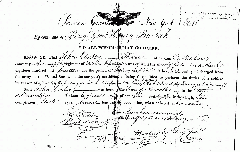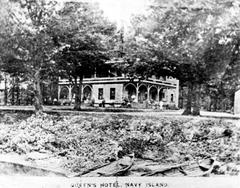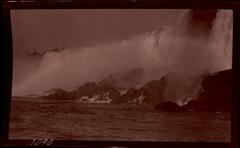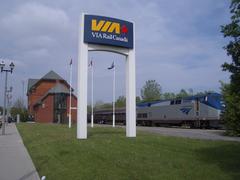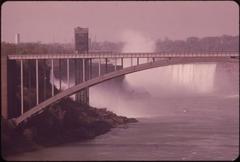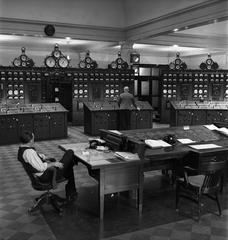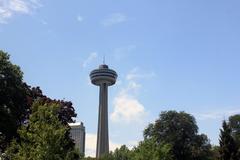
Niagara Scow Visiting Hours, Tickets, and Travel Guide at Niagara Falls, Canada
Date: 04/07/2025
Introduction
The Niagara Scow, a rusted steel-bottomed sand barge, is a testament to both the dramatic power of the Niagara River and the courage of those who navigated its treacherous waters. Marooned just upstream from the iconic Horseshoe Falls since 1918, the scow is now a unique historical landmark and a symbol of human resilience. Its gripping history, combined with easy public accessibility, makes it a must-see for visitors to Niagara Falls, Canada.
This comprehensive guide covers the Niagara Scow’s riveting backstory, best viewing locations, accessibility, visitor tips, and practical travel information to help you make the most of your visit.
Table of Contents
- History and Significance of the Niagara Scow
- The 1918 Incident and Daring Rescue
- Legacy and Cultural Impact
- Visiting the Niagara Scow: Hours, Tickets, and Tips
- Best Viewing Locations
- Accessibility and Facilities
- Nearby Attractions
- Seasonal Highlights and Events
- Safety and Photography Tips
- FAQ: Visiting the Niagara Scow
- References and Further Resources
History and Significance of the Niagara Scow
On August 6, 1918, the Niagara Scow broke loose while being towed during routine dredging operations by the Great Lakes Dredge and Docks Company. With crew members Gustav Lofberg and Frank Harris aboard, the barge drifted rapidly towards the brink of Horseshoe Falls after its towline snapped. The men’s desperate attempts to slow the vessel—including dropping anchor and trying to ground the scow—ultimately succeeded when the barge lodged on a rock shoal approximately 600–800 meters (about 2,000–2,500 feet) from the falls’ edge (Niagara Parks; Niagara Falls Info).
The subsequent rescue, involving both Canadian and American personnel, became legendary and highlighted international cooperation and local heroism.
The 1918 Incident and Daring Rescue
Stranded and facing imminent peril, Lofberg and Harris endured 17 tense hours before being rescued. The Toronto Power Company, local fire departments, and U.S. Coast Guard coordinated to shoot lines to the scow and set up a breeches buoy—an innovative rope-and-pulley system. William “Red” Hill Sr., a renowned local riverman, played a critical role by braving the rapids to untangle lines, ensuring the crew’s survival. Both men were brought safely to shore in a feat celebrated for its bravery (CBC News; City Experiences).
This incident not only underscored the river’s dangers but also led to enhanced safety protocols for future operations in the Niagara region (Travel Pander).
Legacy and Cultural Impact
Enduring Symbolism
The Niagara Scow, now a rusted hulk, remains visible in the upper rapids. Its presence serves as a tangible reminder of both industrial history and the human spirit’s resilience. Over a century later, the scow has become an integral part of Niagara’s landscape, woven into local folklore, educational programming, and artistic inspiration (Freaktography; Niagara Parks).
Environmental and Engineering Interest
The scow’s century-long exposure to extreme environmental forces offers valuable insights for engineers and environmentalists studying corrosion, water flow, and ice movement. Notably, in October 2019, the scow shifted for the first time in over 100 years during a severe storm, capturing renewed public attention (CBC News).
Visiting the Niagara Scow: Hours, Tickets, and Tips
Admission: Viewing the Niagara Scow is completely free. There are no tickets or special entry requirements.
Hours: The scow is visible year-round from public viewing points along the Canadian side of the Niagara Parkway. There are no restricted hours for outdoor viewing, though daylight provides the best conditions (Wikipedia; Canada Picks).
Accessibility: Viewing areas, including Queen Victoria Park and the Table Rock Welcome Centre, are fully accessible with paved walkways and ramps. The WEGO bus system and public parking make access easy for all visitors (Niagara Falls Tourism; Niagara Falls Tourism).
Best Times to Visit:
- Spring/Fall: Mild weather, fewer crowds, and beautiful foliage.
- Summer: Warmest weather and extended daylight, but expect larger crowds.
- Winter: Quiet atmosphere and the chance to see the scow surrounded by ice, though paths may be slippery.
Photography: Early mornings and late afternoons offer softer lighting and fewer visitors. Bring binoculars or a camera with a zoom lens for detailed views.
Best Viewing Locations
- Queen Victoria Park: Panoramic views of the Niagara River and scow.
- Niagara Parkway: Multiple lookout points along the river.
- Table Rock Welcome Centre: Short walk to viewing areas with interpretive signage.
- Toronto Power Generating Station: Historic site with close proximity to the scow’s location.
All viewing points are wheelchair accessible and offer benches or railings for comfort and safety (Niagara Parks; Over the Falls Tours).
Accessibility and Facilities
- Parking: Paid lots available near Table Rock and Queen Victoria Park; spaces fill quickly during peak seasons.
- Restrooms and Dining: Facilities at Table Rock Welcome Centre and along the Niagara Parkway.
- Public Transit: WEGO buses provide accessible connections to all major sites.
Visitors should dress for the weather and river mist, especially in cooler months. Paths are well-maintained but may be icy in winter.
Nearby Attractions
- Horseshoe Falls: A short walk from the scow viewing points.
- Journey Behind the Falls: Observation decks and tunnels behind the falls.
- Niagara Parks Power Station: Historic hydroelectric site with exhibits.
- Niagara Glen Nature Reserve: Scenic hiking trails along the river.
- Butterfly Conservatory, Queen Victoria Park, and Niagara-on-the-Lake: Additional nature and cultural attractions within easy reach (Niagara Parks; ToNiagara).
Seasonal Highlights and Events
- Anniversary Events: Talks and commemorations often occur around August 6th, marking the 1918 incident.
- Winter Festival of Lights: Adds festive illumination to the falls and surrounding area.
- Educational Programs: Interpretive signage and occasional historical reenactments featured in local tours.
Stay updated on event schedules through official Niagara Parks and tourism websites (AllEvents Niagara Falls).
Safety and Photography Tips
- Stay behind all safety railings along the riverbank.
- Use caution on potentially slippery pathways, especially in winter.
- Supervise children and protect belongings in crowded areas.
- Use telephoto lenses or binoculars for detailed viewing; tripods are welcome but be considerate of other visitors.
- Dress in layers and wear waterproof gear when necessary.
FAQ: Visiting the Niagara Scow
Q: Is there an admission fee or ticket required to see the Niagara Scow?
A: No, the Niagara Scow can be viewed for free from public areas.
Q: Can I get close to the Niagara Scow?
A: The scow is stranded in the river and not accessible by foot or boat, but visible from several designated viewing points.
Q: Are there guided tours available?
A: Many walking and bus tours of Niagara Falls include information about the scow, its history, and the 1918 rescue.
Q: Is the site accessible for people with mobility challenges?
A: Yes, main viewing paths are wheelchair accessible, and the WEGO bus system is equipped for accessibility.
Q: When is the best time to visit for photography?
A: Early morning and late afternoon provide the best natural lighting and fewer crowds.
Q: Are there safety concerns?
A: Always stay behind safety barriers and avoid climbing or leaning over railings due to strong currents.
References and Further Resources
- Niagara Falls Info – The Tug and the Scow
- Niagara Parks – Niagara Scow History
- Wikipedia – Niagara Scow
- Travel Pander – Boat Stuck in Niagara Falls
- CBC News – Century-old Shipwreck Iron Scow
- City Experiences – The Death-Defying History of the Niagara Scow
- ToNiagara – Things to Know When Visiting Niagara Falls, Canada
- Niagara Falls Tourism – Plan Your Visit
- Freaktography – History of the Niagara Falls Old Scow
- Canada Picks – How to Visit Niagara Falls in 2025
- Over the Falls Tours – Niagara Falls Guide 2025
- The Tourist Checklist – Niagara Falls Canada
- Niagara Falls Tourism – Parking Guide
- Niagara Falls Tourism – Getting Around
- Niagara Falls Tourism – Places to Stay
- Niagara Falls Tourism – Additional Information
Plan Your Visit
The Niagara Scow stands as a powerful symbol of the region’s history, human ingenuity, and the relentless force of nature. Free to view and accessible year-round, it offers both a compelling story and a striking visual to complement your Niagara Falls adventure.
For audio guides, interactive maps, and more travel tips, download the Audiala app and follow us on social media. Explore related articles about Niagara Falls historical sites to enrich your experience.



